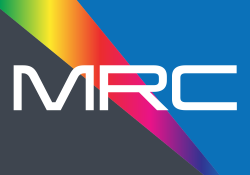The advent of semiconductor lasers revolutionized the way we send, receive, and store information. Two-dimensional materials are a new material platform with many potential applications as flexible, transparent, compact components in future electronic or optical technologies. Researchers at Texas ECE have now discovered a method for creating a two-dimensional laser.
Will Burg, a PhD student in Texas ECE supervised by Dr. Emanuel Tutuc, has been able to demonstrate that by stacking two different semiconducting layers, with a precisely controlled zero-degree twist angle between the layers, a two-dimensional laser can be realized. The two layers are placed on a microscopic grating, which traps incident light and stimulates lasing in the layers. This work represents a proof of concept for a two-dimensional laser, which could be more compact and integrate better with existing material systems than current laser technologies.
The research, a collaborative study with Eunice Paik, Long Zhang, and Prof. Hui Deng at the University of Michigan, was published in Nature earlier this week.
The demonstration is the first step in creating a new class of more efficient, compact and integrated semiconductor lasers using atomically-thin two-dimensional heterostructures. Burg and Tutuc hope to use different 2D heterostructures and integrate electrical control to gain better understanding and thereby optimize the carrier dynamics for more efficient lasing, to cover different wavelengths, to tune and modulate the lasing output, and to explore many-body phenomena.
Will Burg is a PhD student in the Department of Electrical and Computer Engineering and the Mircoelectronics Research Center at The University of Texas at Austin. He received his BS from the University of Kansas before joining Texas ECE in 2015.
Emanuel Tutuc holds the B. N. Gafford Professorship in Electrical Engineering in the Electrical and Computer Engineering department at The University of Texas at Austin. He was elected a Fellow of the American Physical Society (APS) in 2016.



